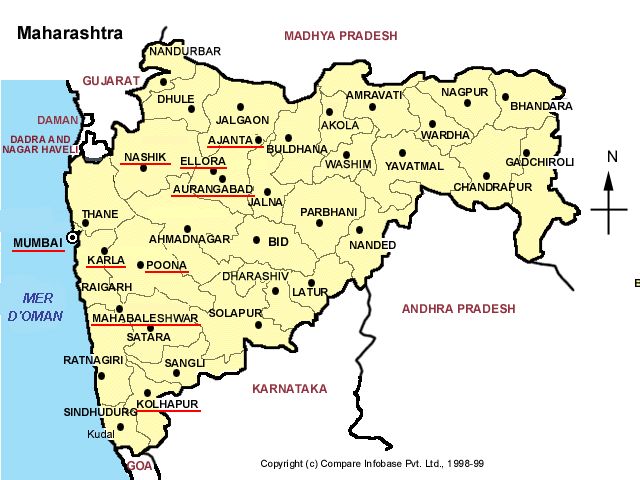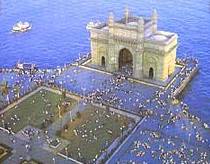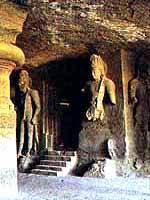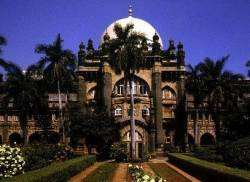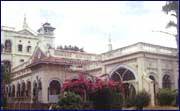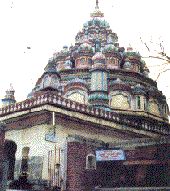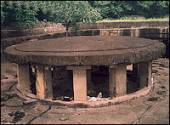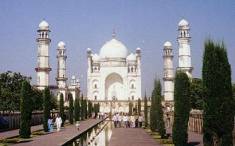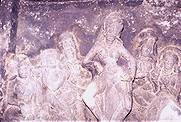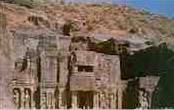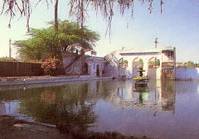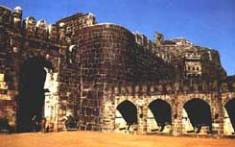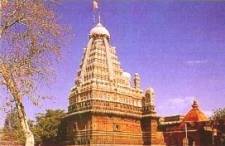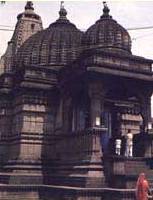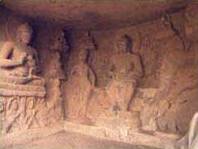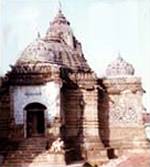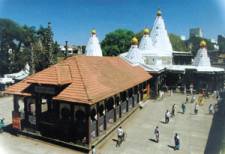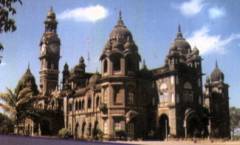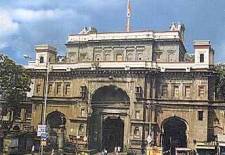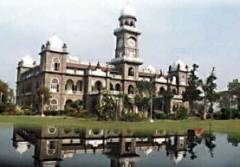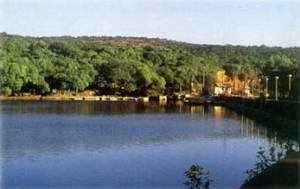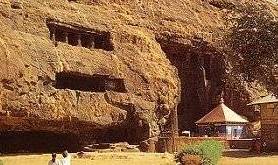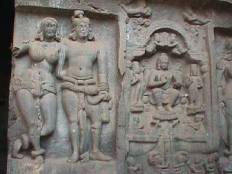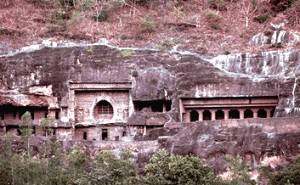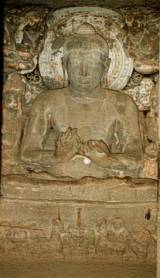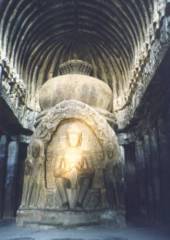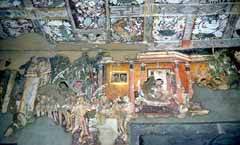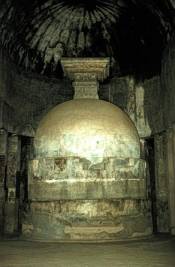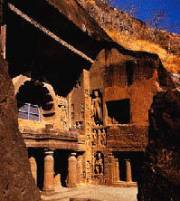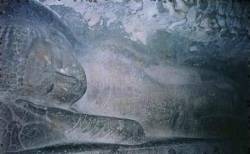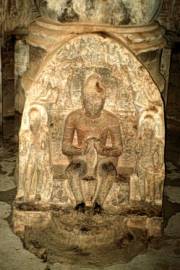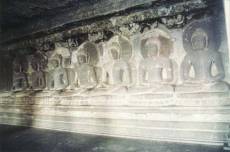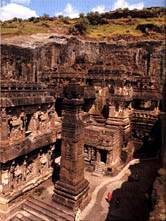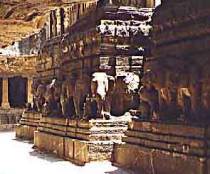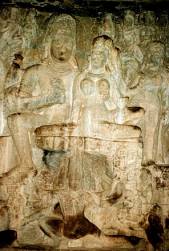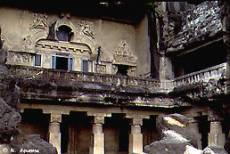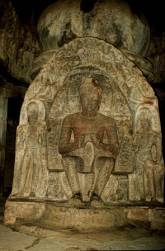The state of Maharashtra is located in the north-west of India. Its area is 307 690 km2 and its capital is Mumbai (formerly Bombay). There are more than 90 million people and the official language is marathi.
Maharashtra, thanks to the influence of Mumbai, is fairly industrialized and economically powerful. There are a wide range of industries (heavy industries, petrochemicals, IT, textiles ...) The state extends from the beaches of the Arabian Sea to the heights of the Western Ghats which host many high altitude resorts.
History
The history of this region of India is closely linked to that of the Marathas who reigned over the region between the eighth and early nineteenth centuries. Formed of warlike clans, the Marathas extended their territory to the heart of the Deccan in central India and constituted the main threat of the Mughal power. More recently Maharashtra was the starting point of the struggle for independence as Gandhi was born there and carried out his first actions.
Map of the province of Maharashtra
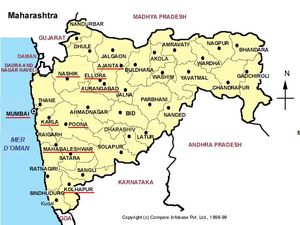
Map Maharashtra
Mumbai
Mumbai (formerly Mumbai) is the capital of the state of Maharashtra. It has more than 15 million inhabitants making it the largest city in India. The city was founded by Koli fishermen on 7 islands and was ruled by Hindus before being occupied by Muslims in the 14th century. In 1534 the latter ceded the area to the Portuguese who baptized the city Bombaim. In 1661 the English Charles II marries with the Portuguese Catherine of Braganza whose dowry includes one of the islands. The British took possession of the six other islands in 1665 and renamed Bombaim in Bombay. The city was leased to the British East India Company to make it a free trade zone.
The city grew rapidly and quickly became the main trading port on the west coast. In the nineteenth and twentieth centuries Bombay became the heart of the struggle for independence. It hosted the first meeting of the Congress in 1885 and Gandhi launched its great movements of civil disobedience. In 1996 Bombay was officially renamed Mumbai.
Mumbai is today the economic and financial lung of India. It still hosts many immigrants but the development of the city leaves many people on the side. The wealth of the financial districts is alongside the blackest misery of the shantytowns. It is said that breathing air in Mumbai for a day is equivalent to smoking twenty cigarettes. Mumbai is one of the major centers of film production and Bollywood studios are world famous.
Mumbai has all the modern facilities. The city is served by numerous international connections via Sahar airport and by national routes via Santa Cruz airport. The city has several stations which will allow to make connections on all the region.
The gate of India
26m high, this monument of arch-shaped basalt was built in 1911 on the shore to celebrate the arrival in India of King George V and Queen Mary. It was inaugurated in 1924. Today the Gate of India remains one of the main centers of attraction of Mumbai.
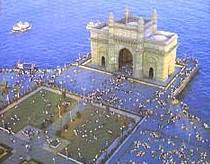
The gate of India
The beach of Chowpatty
This beach is not really a place to swim. The inhabitants of Bombay find themselves there rather to stroll at the end of the day. There are all kinds of vendors, magicians, masseurs, small restaurants ... The Chowpatty beach is the ideal place to attend the Ganesh Chaturthi festival in August / September during which the faithful immerse the effigies of the god Ganesh.
Marine drive
Marine Drive is also a popular beachfront promenade. It leaves from Nariman Point, runs along Chowpatty Beach and ends in the Malabar Hill neighborhood. This is where you get the best views of the bay of Mumbai. The rounded shape of Marine Drive earned it the nickname "queen's necklace" because of the streetlights that illuminate it at sunset.
The island Elephanta
The island is 10km from the shores of Bombay. It is known for its rock temples dug in the rock between 450 and 750. The Portuguese seriously damaged the sculptures. The main cave contains representations of Shiva and a lingam. The most impressive statue is that of Trimurti (the Hindu holy trinity: Brahma, Shiva, Vishnu).
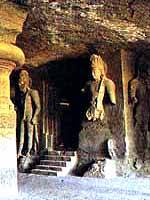
The island Elephanta
The Prince of Wales Museum
Built in the Indo-Muslim style in 1905 in honor of the Prince of Wales, the future George V, the building houses collections of objects collected on Elephanta Island, the Jogeshwari caves, Indus as well as collections of sculptures, miniatures and portraits. The museum is surrounded by an ornamental garden and is surmounted by a dome inspired by the Golgumbaz of Bijapur.
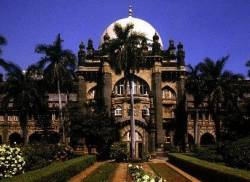
The Prince of Wales Museum
Mani Bhawan
This is the house that Gandhi occupied during his visits to Mumbai. It houses a memorial and a museum where you can see pictures of the Mahatma and the objects that belonged to it.
The Flora Fountain
This imposing fountain is located in the business district of Mumbai. Built in 1869 in honor of the governor of the city, Sir Bartle Frere, it owes its name to the Roman goddess of abundance.

The Flora Fountain
The mosque Haji Ali
Built at the beginning of the 19th century, the mosque houses the tomb of Haji Ali, a businessman who ended his life in Mumbai by dedicating it to meditation. It is accessible only at low tide.

The mosque Haji Ali
The temple of Walkeshwar
The temple was built by the kings of the Silhara dynasty who ruled the area between the 9th and 13th centuries. It was destroyed by the Portuguese and rebuilt in 1715. The Banganga basin adjoining the temple is one of the oldest buildings in Mumbai. According to legend Rama stayed at this place during his journey to go and free his wife Sita. Rama would have caused the spring of the Banganga basin to explode by unhooking an arrow.
The temple of Mumbadevi
The present temple was rebuilt on the foundations of an older temple in 1737. Mumba is the mother-goddess revered by Koli fishermen. The name Mumbai given to the city would come from the name of this goddess. Note that photographs are prohibited in the temple.
Poona
Located south of Mumbai, Poona (or Pune) is considered the cultural capital of Maharashtra. Poona is a university town recognized throughout India and is one of the most developed metropolises in the country.
During the reign of Shivaji in the seventeenth century, Poona became the capital of the Marathas. The dominant position of the city was reinforced by the peshwas who were the hereditary prime ministers of the marathon kings. They made it a very rich and culturally and institutionally developed city. After their victory over the Marathas, the English made it a resort town that allowed them to escape from the heat of Mumbai.
It was in Poona that the nationalist leader Gangadhar Tilak created the famous festival of Ganesh Chaturti, now celebrated everywhere.
The Shaniwar Wada
Built in 1736, Shaniwar Wada was the residential palace of the Peshwas. It was destroyed by a fire whose origin remains unknown in 1827. Today only remains the ruins, the surrounding walls and a park.
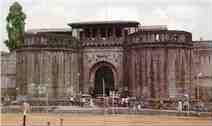
The Shaniwar Wada
The palace of Aga Khan
This building built by a Sultan in 1892 was the Aga Khan Palace until 1956. It is also a historic high place of the struggle for independence. It is indeed here that Gandhi and other separatists were detained for two years after launching the movement "Quit India" in 1942. The wife of Gandhi died there during this detention and his ashes are still kept in a mausoleum (a samadhi).
The palace houses a memorial where the visitor can see several personal belongings belonging to Gandhi as well as a gallery of photographs retracing the life of the Mahatma.
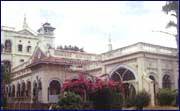
The palace of Aga Khan
The hill of Parvati
On this hill overlooking Poona the peshwas built a temple for their use dedicated to Parvati. Today there is also a museum where replicas of paintings, miniatures, manuscripts and weapons are displayed.
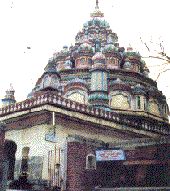
The hill of Parvati
The temple of Pataleshvara
This temple was carved in a rocky block in the eighth century. The sculptors have beautifully carved out massive pillars, a sanctuary dedicated to Shiva and a circular mandapam for the Nandi bull. The temple is still active.
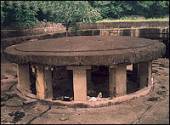
The temple of Pataleshvara
The museum of Raja Kelkar
This museum houses the collections of art collected by Shri Dinkar Kelkar during his lifetime. He donated it to the government of Maharashtra when he died in 1990. The 36 sections of the museum show thousands of objects (miniatures, paintings, weapons, pottery, crafted doors and windows, instruments of music, etc.)
Aurangabad
Aurangabad owes its name to the emperor Moghol Aurangzeb who made it the capital of Deccan in 1653. Previously it was a small village, Khirki. In 1610 Malik Ambar, Prime Minister of Nizam Shah II, made it a city. In 1626 the town is named Fathepur. The region was not, however, discovered by Muslims. It had been inhabited since the Stone Age. The Maurya brought Buddhism there. The Chalukya built temples and Buddhist monasteries in Ajanta and Ellora. The Rashtrakutas built the great Hindu temples like that of Kailasa in Ellora.
The Bibi-Ka-Maqbara
Nicknamed the mini-Taj Mahal, this mausoleum was built in 1679 to house the tomb of the Begum Rabia Dirani, wife of Emperor Aurangzeb. It was not, however, built of marble, and owed its whiteness only to plaster.
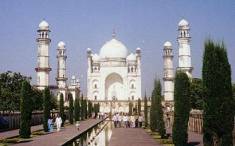
The Bibi-Ka-Maqbara
The caves of Aurangabad
The 10 caves of Aurangabad are a few kilometers from the city. They were carved in the 7th century and are all Buddhist. The western group, consisting of caves 1 to 5, is about 1 km away from the eastern group (caves 6 to 10). The most interesting caves are numbers 6 and 7. They contain fine sculptures of women adorned with their jewels and statues of Buddha very well preserved.
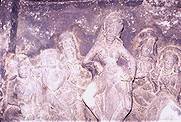
The caves of Aurangabad
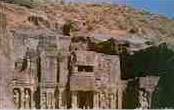
The caves of Aurangabad
Panchakki
Dating from the 17th century this water mill was used to grind grain. The wheel was powered by the energy of water taken from a nearby river and transported in earthen pipes.
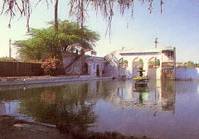
Panchakki
The fortress of Daulatabad
At 13 km from Aurangabad this impressive fortress stands on the top of a hill and is surrounded by a thick wall. It was built between the 10th and 11th centuries by the Yadava. The site was then called Deogiri (Hill of the Gods). In the 14th century, Muhammad ibn Tughluq, the Sultan of Delhi, impressed by the site, decided to establish his new capital there and ordered the population to follow him. Delhi. But he remained at Daulatabad only 17 years and returned to Delhi leaving the fortress deserted.
Not far from the fortress is the Chand Minar, a magnificent victory tower erected in 1435. The fortress was once surrounded by moats deep about a dozen meters and infested with crocodiles. At the top of the surrounding wall, you can still see some of the huge defensive guns. The gigantic doors are provided with spikes designed to prevent the elephants from shooting.
Several times besieged, this stronghold was never conquered by force, but always by cunning or treachery.
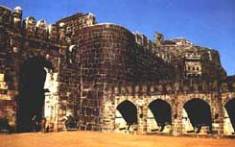
The fortress of Daulatabad
The temple of Ghrishneswar
Located about 20 kilometers from Aurangabad and close to the caves of Ellora, the temple of Ghrishneswar was built in the 18th century. It is home to one of the 12 jyothirlingas (Indian Lingam) of India and is a Hindu pilgrimage site.
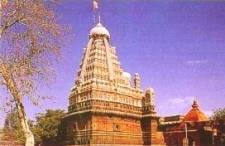
The temple of Ghrishneswar
Nasik
The city of Nasik (or Nashik) on the banks of the Godavari, is a great place of pilgrimage of Hinduism. Every twelve years is the Kumbh Mela. In reality, this gathering takes place every three years but alternately in four different cities (Nasik, Ujjain, Allahabad and Haridwar). According to the myth, the gods, in fighting to possess it, would have overturned four drops of the nectar of immortality. These drops would have fallen on Earth at the place where these four cities were built. The Kumbh Mela, with tens of millions of pilgrims, is the largest human gathering. The next Nasik Kumbh Mela will take place in 2003.
The Ramkund
It is the most sacred place in the city. It is a basin of ablutions surrounded by ghats where the pilgrims come to cleanse themselves of their impurities. The dispersal of the funerary ashes in its sacred water makes it possible to accelerate the moshka (liberation of the soul). The basin was built in 1696. Legend has it that Rama and Sita came to bathe there during their exile.

The Ramkund
The Kala Rama Mandir
It is the largest temple of Nasik and the most sacred. It was built of black stones in 1790 by Sardar Odhekar. It is entered by four doors facing the four cardinal points. The idol representing Rama is painted black (hence the name of the temple). The temple houses a large bell that can be heard 5km around.
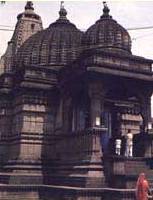
The Kala Rama Mandir
Pandava Caves
There are 24 of them. Their name comes from the fact that the inhabitants wrongly believed that the idols carved in the caves were those of the Pandava. Most of them were occupied before JC but were converted to the Buddhist cult in the 5th century.
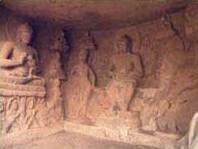
Pandava Caves
The temple of Muktidham
This is a recent building built in 1971 with white marble of Rajasthan. The walls are decorated with numerous decorations including those representing the 18 chapters of the Bhagavad-Gita.
The temple of Sundarnarayan
Built in 1756 by Gangadhar Chandrachud, it is dedicated to Vishnu and Lakshmi. Its orientation is such that every 20th and 21st March the rays of the sun fall at the feet of the idols.
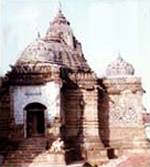
The temple of Sundarnarayan
Kolhapur
Mentioned in Hindu texts as Karvir, Kolhapur was an important Jain center in the 3rd century. The region was then controlled by the Shilahara kings. The history of Kolhapur is generally divided into three periods: the Hindu period until 1347, the Muslim period from 1347 to 1700 and the Marathi period from 1700. During the British occupation Kolhapur was the capital of the kingdom of the same name . This kingdom was incorporated into India in 1947.
The temple of Mahalakshmi
It is believed that this temple was built in the eighth century by the Chalukyan. It is dedicated to the goddess Mahalakshmi, better known locally as Ambabai. His statue was carved in a black stone and adorned with precious stones. The goddess has four arms and holds a mass, a shield, fruits and a cup. A cobra stands on his head. Every Friday, the idol is placed on a palanquin and is taken in procession around the temple.
From 31 January to 2 February and from 9 to 11 November each year there is a celebration. On these dates the rays of the sun fall directly on the statue.
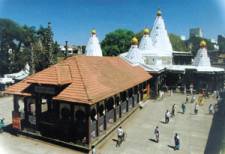
The temple of Mahalakshmi
The new palace of Maharaja
This palace was built between 1877 and 1884 after a fire destroyed the old one. Designed by Major Mant, style blends Hindu, Muslim and Victorian architecture. It still serves as a residence for the descendants of the maharajas and houses an impressive collection of various objects (clothing, hunting photos, elephant saddles, jewelery, etc.). A room is entirely reserved for the presentation of stuffed hunting trophies , wild dogs, lions, black panthers, bears, etc.)
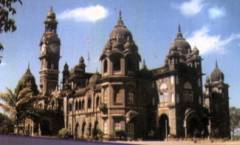
The new palace of Maharaja
The Bhavani Mandap
This palace was built during the reign of Shivaji Maharaj (1785-1800) when Kolhapur obtained its autonomy. In 1813 the Muslim Sadakhan took him by assault and burned half. In the center of the palace stands the temple of Kulswamini Tulja Bhavani. Not far from the main corridor is the statue of Shahu Maharaj.
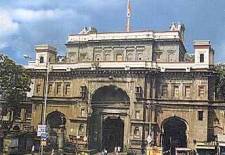
The Bhavani Mandap
The lake Rankala
It is a place of walks surrounded by gardens very appreciated by the inhabitants of Kolhapur. The city was once a center of film productions and many films were filmed on the shores of the lake. Not far away you will see the Shalini Palace built in 1934 in black stone and Italian marble. The wooden doors and the black stone arches rival beauty with the stained-glass windows with the coat of arms of the maharaja of Kolhapur. In 1987 the palace was converted into a luxury hotel, the only one in Maharashtra.
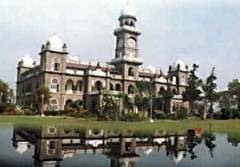
The lake Rankala
The field of struggle
Kolhapur is a famous center of traditional struggle, the kusti. The training of the wrestlers takes place every day in public. The competition season runs from June to September, but it is always possible to attend matches outside these dates.
Mahabaleshwar
It is not clear when the town of Mahabaleshwar (1372 m above sea level) was built. we know that King Jadav stayed there in 1215 and built a small temple there. The history of the city was especially marked by the imprint of the Marathi king Shivaji in the 17th century. He took the region back to the Mughals and strengthened it. Marathas controlled the area until they fell against the English in the 19th century. The latter made it a climatic station and built cottages and bungalows there.
Today, the city is the most frequented resort in Maharashtra and it has no less than a hundred hotels for about 12,000 inhabitants.
The temple of Panchganga Mandir
Also called Krishnabai temple, it was built in the 13th century by King Raja Singhandeo and then extended by the Marathi king Shivaji in the 17th century. A cow carved in the stone is inside. Hindus believe that the springs of five sacred rivers (the Krishna, the Koyna, the Venna, the Savitri and the Gayatri) spring from his mouth.
The temple of Mahabaleshwar
Built in the late seventeenth century during the reign of Raja Sahu, the temple is divided into two: an inner hall (or divine chamber) and an outer hall (or central hall). It is dedicated to the cult of Shiva and it contains a natural lingam.
Catholic Church
Built on the hill overlooking the city this church is now partially destroyed but these magnificent stained glass windows are still in good condition.
The Lake Venna
It is an artificial lake built under the maharaja Shahaji of Satara and completed in 1842. It is the main tourist attraction of Mahabaleshwar due to the many activities offered on site.
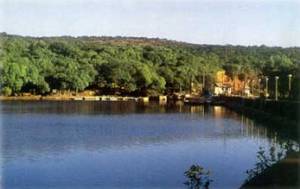
The Lake Venna
The mount Malcolm
Built in 1829, this building was once the residence of the British Governor. Left to the abandonment the splendor of the past is no more than a memory.
The caves of Karla and Bhaja
These rock-caves constitute one of the finest examples of Buddhist art from the 2nd and 3rd centuries BC The architectural style is based on four structures: the stupa (Dome raised above the remains of Buddha or a saint); the chaitya (large gathering room for prayers); the vihara (monastery) and the caves carved in the rock.
The cave of Karla
The cave is the largest Buddhist chaitya in India. 40 meters long and 15 meters wide, it was completed in 80 BC The walls and 37 columns are decorated with lion and elephant sculptures. The façade is decorated with architectural ornaments and human representations. At the entrance are two pillars fifteen meters high decorated with lions. The antechamber is pierced by a large semicircular window which illuminates the stupa which is inside the cave.
The vault of the room is supported by wooden beams that would be original. They would thus constitute the oldest traces of carpentry still visible in India.
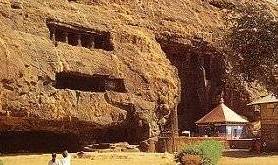
The cave of Karla
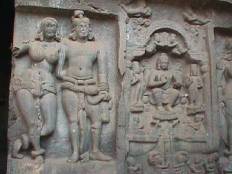
The cave of Karla
The cave of Bhaja
18, they were carved in the 2è century before our era. They are mostly viharas (there are 10). The largest cave is number 12. It is home to a chaitya but does not contain any sculpture, unlike the last cave that houses magnificent ones, including the "dancing couple".
The caves of Ajanta
The Ajanta caves were dug in the rock by Buddhists between -200 and 650. They were accidentally discovered in 1819 by Captain John Smith during a hunting party.
There are 29 including the 3 unfinished. There are two kinds of grottoes: those made by the monks of the Hinayana school (the oldest ones) and those of the Mahayana school (from the 5th century). Five caves are chaityas or prayer halls (9, 10, 19, 26, 29) and the others are viharas or monasteries (the other 25). The numbering is not indicative of their date of creation. The caves are decorated with numerous paintings and sculptures that illustrate the life of Buddha. Numbers 3, 5 and 8 are incomplete.
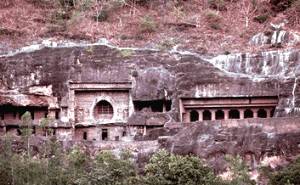
Le caves of Ajanta
The cave 1
Cave 1 is a vihara mahayana. This is probably the most decorated cave. The most beautiful paintings are those representing the bodhisattvas Padmapani and Vajrapani and those representing scenes of the Jatakas. The most remarkable sculpture is that of the four deer sharing one head.
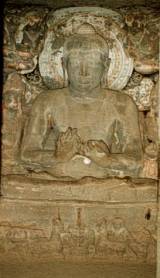
Le cave of Ajanta
The cave 2
Cave 2 is a vihara mahayana. This cave is remarkable for its ceiling painted with geometric motifs. The murals depict scenes from the Jatakas as well as scenes from the life of Buddha including the dream that his mother made before his birth.
The cave 4
Cave 4 is the largest vihara in Ajanta. Inside are 28 pillars and wall sculptures representing a group of characters fleeing the eight perils and seeking refuge with Avalokitesvara, a disciple of Buddha.
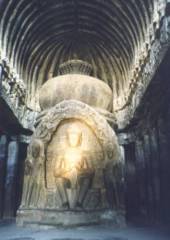
Le cave of Ajanta
The cave 6
Cave 6 is a two-storey vihara. Partially collapsed, it houses a representation of Buddha and cells whose doors are surmounted by paintings.
The cave 9
Cave 9 is a chaitya hinayana. The entrance to the cave is surmounted by a semicircular window intended to illuminate the interior. It is believed that the two Buddhas framing the entrance were later added by the mahayanas monks. The wall paintings were very damaged despite renovation efforts.
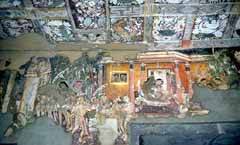
Le cave of Ajanta
The cave 10
Cave 10 is a chaitya hinayana. It is probably the oldest cave in the Ajanta site. His façade collapsed and the interior paintings depicting scenes from the Jataka were damaged.
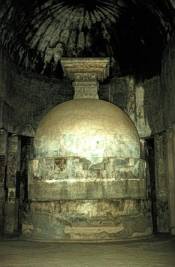
Le cave of Ajanta
The cave 12
Cave 12 is a chaitya hinayana. The facade has completely disappeared, leaving the interior completely exposed.
The cave 16
Cave 16 is a vihara. Two elephants frame the entrance. Inside are beautiful paintings. The most famous is the conversion of Nanda, the cousin of Buddha. Other paintings show Buddha giving alms, a procession of elephants, the miracle of Sravasti, etc. One can also see statues, especially that of the Buddha sitting on a lion.
The cave 17
Cave 17 is a vihara mahayana. It is one of the most beautiful caves on the site. The paintings are remarkably preserved there. They show different scenes of the Jatakas; a woman being made up makeup; a row of eight Buddhas; the goddess Indra flying through the clouds; Apsara and musicians; Buddha taming Nalagiri, a furious elephant sent by a jealous cousin; etc.
The cave 19
Cave 19 is a chaitya mahayana. It has a beautiful facade pierced by a semi-circular window. Two Buddhas are on either side of the entrance. Inside are beautiful paintings and sculptures including that of Buddha in front of a three-storey dagoba. Outside this cave is a statue of King Naga surrounded by seven cobras and a statue of his wife sitting at his side.
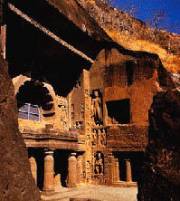
Le cave of Ajanta
The cave 20
Cave 20 is a small vihara without column.
The caves 21 to 24
Caves 21 to 24 are the latest creations of the site and are partially unfinished. They made it possible to understand how craftsmen were digging the rock.
The cave 26
Cave 26 is a chaitya mahayana. The facade has completely collapsed and there are no more paintings. On the other hand, the sculptures have resisted better. One can particularly see a very beautiful lying Buddha and representations of the temptations sent by Mara to corrupt Buddha.
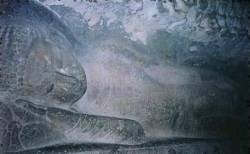
Le cave of Ajanta
The caves of Ellora
The 34 caves of Ellora were excavated in the rock for five centuries between the seventh and eleventh centuries by Buddhists, Hindus and Jainas. The beauty of the excavations and the fineness of their decoration have earned them their classification as a world heritage of humanity. They are located along a 2 km long escarpment facing north-south.
There are 12 Buddhist caves, 17 Hindu caves and 5 Jain caves. The presence of the three religions on the same site shows the very great tolerance that prevailed at the time.
Buddhist caves (1 to 12)
These are the oldest caves on the site. Their excavation began in the 5th century. These are all viharas (monasteries) with the exception of cave 10 which is a chaitya (room). These caves are of fairly simple architectural design except caves 11 and 12 that the artists wanted more ambitious.
- Cave 2: A great Buddha is at the bottom of the cave supported by sculpted pillars.
- Cave 5: This vast vihara (36 m long) was a gathering room as evidenced by the stone benches still visible.
- Cave 6: It houses the statues of a seated Buddha, the Bodhisattva Avalokitesvara and the goddess Mahamayuri.
- Cave 9: It is particularly worthy of its facade decorated with remarkable bas-reliefs.
- Cave 10: This is the only chaitya of the site. The cave is nicknamed "the carpenter's cave" (Vishvakarma) because of the false beams painted on the ceiling. A staircase leads up to a gallery where one can admire more closely the sculptures in particular a great seated Buddha.
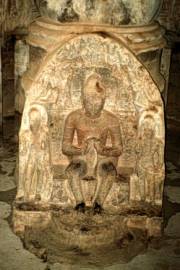
The caves of Ellora
- Cave 11: It has two floors and is accessed through a courtyard.
- Cave 12: As for the 11th, you reach this cave three floors by a courtyard. A great seated Buddha is on the third level. At his side are the seven previous incarnations of Buddha. The walls were carved on the model of the Hindu caves.
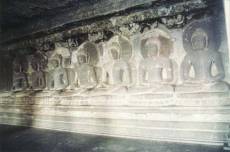
The caves of Ellora
Hindu caves (13 to 29)
Excavated between the 7th and 10th centuries, the Hindu caves are much more ambitious on an architectural and creative level than their neighbors Buddhists and Jainas. It must be remembered that they were all dug from top to bottom.
- Cave 14: It is a temple dedicated to Shiva . Several panels show scenes from Hindu mythology.
- Cave 15: This temple has two floors and is accessed by an external staircase. Many panels pay tribute to the three major Hindu deities: Brahma , Shiva and Vishnu. Shiva appears in several forms, including that of the Nataraja and several avatars of Vishnu are represented.
- Cave 16: This cave is undoubtedly the most impressive of the Ellora site. It is the temple of Kailasa. Mount Kailasa is the home of Shiva in the Himalayas. The artists wanted to recreate it by sculpting it from a single rock. The work was gigantic, it lasted a century and required the excavation of 200,000 tons of rock.
The temple stretches over an area twice that of the Parthenon of Athens. The main courtyard is 81m long and 47m wide. In its center stands the sanctuary connected to the outside by a bridge. Opposite him is the Nandi Pavilion (the sacred mount of Shiva) itself surrounded by two large elephants. Galleries surround the temple and form the enclosure. Finely carved panels represent scenes from the Mahabharata and the Ramayana.
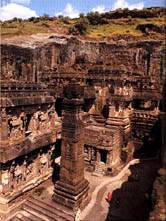
The caves of Ellora
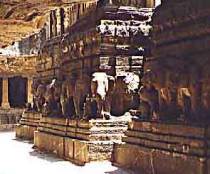
The caves of Ellora
- Cave 21: This is the Rameswana cave. Panels represent scenes from the life of Shiva. A very beautiful statue of the goddess Ganga standing on a crocodile is inside.
- Cave 29: This is the cave of Dumar Lena. It resembles the Elephanta Cave in Mumbai and is dedicated to Shiva.
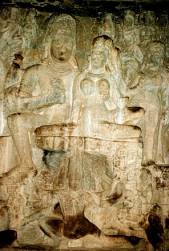
The caves of Ellora
The caves jaïnas (30 to 34)
The Jainas caves were excavated between the ninth and eleventh centuries. Less impressive than the Hindu caves they are nevertheless very finely decorated. They reflect the strict asceticism and the spirit of non-violence of the Jainas.
- Cave 30: This is an unfinished and smaller replica of the Kailasa temple.
- Cave 31: This cave is only an extension of cave 32.
- Cave 32: Indra Sabha is the most beautiful cave in Jaina. It has two levels. The first floor, accessed by a staircase, is very richly decorated by numerous murals and statues. The most remarkable is that of Mahavira (founder of Jainism) seated.
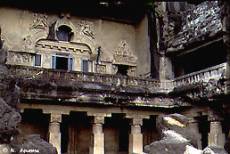
The caves of Ellora
- Caves 33 and 34: They contain some interesting sculptures.
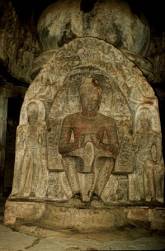
The caves of Ellora
See also:





